Shimano finally goes wireless with XTR Di2, but what does this mean for future road and gravel groupsets?
This latest electric MTB groupset also one-ups SRAM with a nine-tooth sprocket
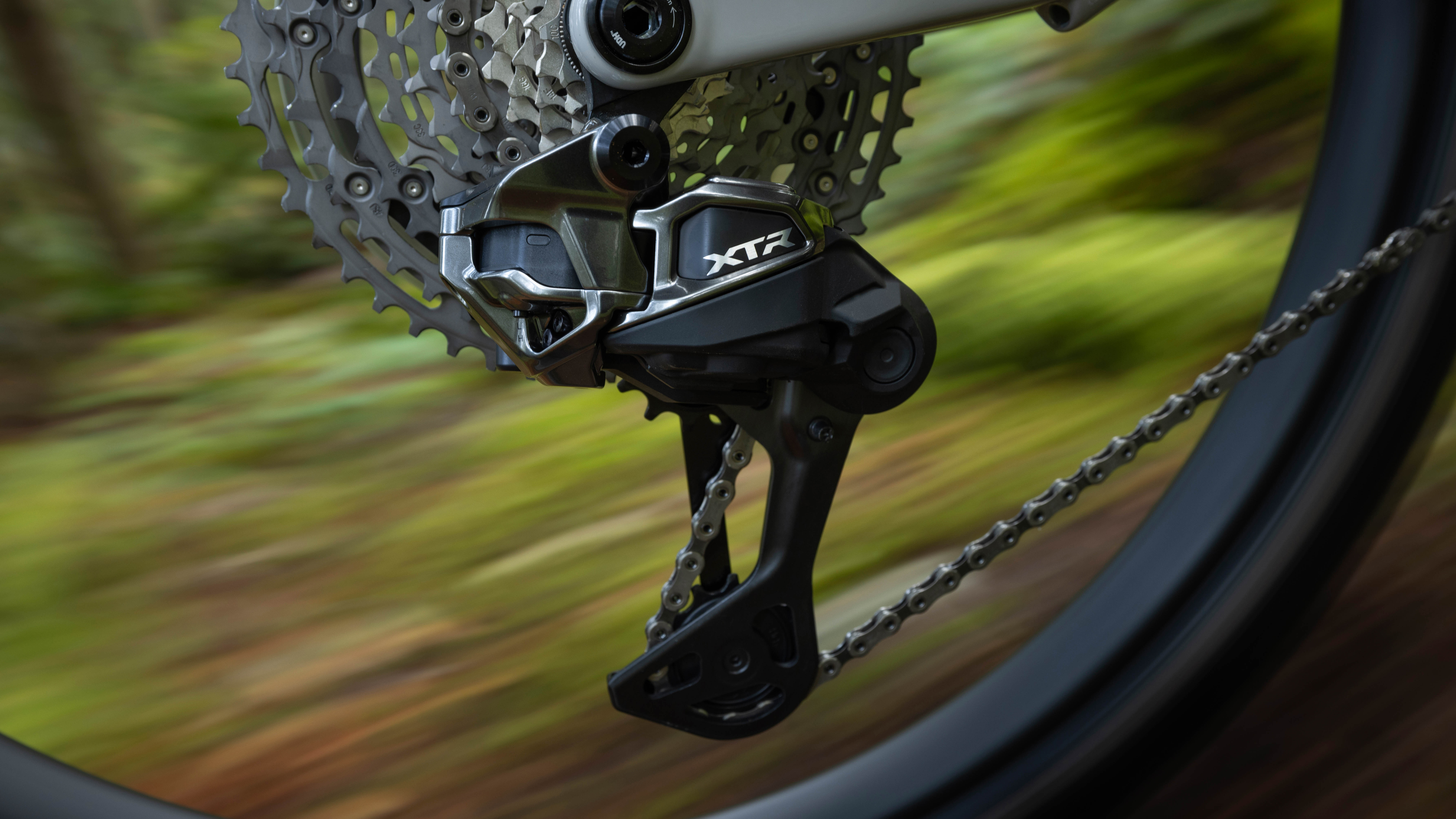
Shimano’s flagship MTB race groupset, XTR, has been electric in the past, but the latest e-version was released in 2015 so there is almost a decade of electric shifting experience in the company since its last crack of the whip. Since then the Japanese componentry giant has fallen back to relying on its cable-actuation expertise for mountain bikes, despite its GRX gravel groupsets coming in electronic versions (albeit only 2x ones), and on the road Di2 shifting being on offer down to 105 level, and even incorporated into its latest Cues commuter groupsets too.
This latest XTR groupset is a reassertion of the brands faith in electronic shifting, and, now that SRAM has gone fully electric at all tiers, and we are likely to see an electric 13sp gravel groupset from Campagnolo on the horizon soon, a broader, industry-wide endorsement of electric as the way to go on all terrains.
Before we dive into the individual updates, I’ll wet the metaphorical whistles with the headline figures: We’re looking at the first fully wireless electronic groupset from Shimano, with a removable battery in the rear derailleur, a new 9t smallest sprocket on one cassette option (one smaller than you’d get from SRAM), and the potential for some interesting mashup groupset combinations.
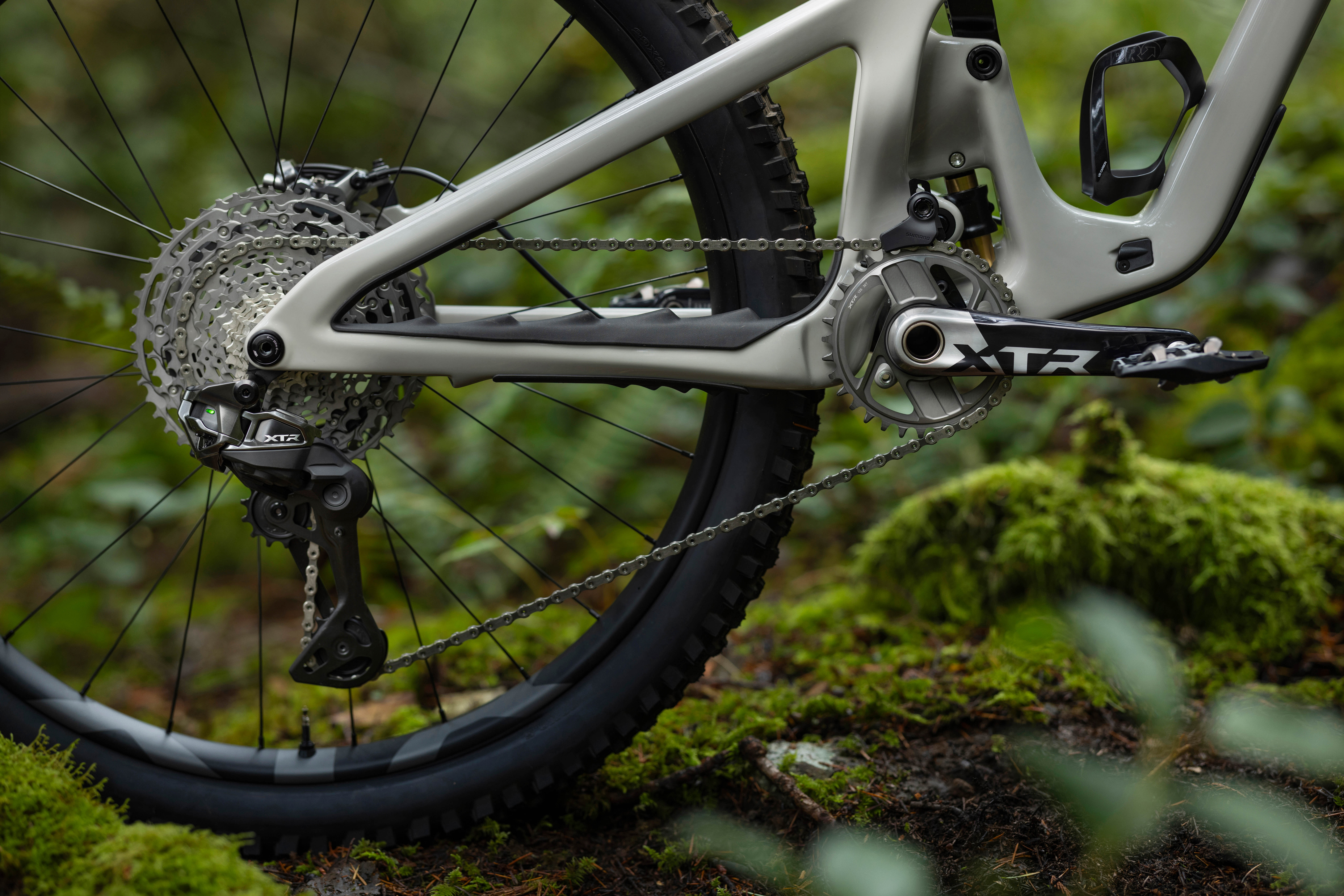
Fully wireless shifting
It is sad as primarily a road cyclist that the MTB brigade get the cream of the crop when it comes to component evolution. I could bore you with the fact that Dura-Ace Di2 wasn’t the first to do electric shifting back in 2009, with this accolade going to the long-forgotten Shimano Nexave Di2 for commuter bikes back in 2001, though this had automatic shifting. In any case, it wasn’t a top-end road groupset, and neither was the mad Shimano Airlines that used a tank of compressed air to shift instead of the movement of electrons, but that's by the by.
In any case, XTR has finally brought Shimano into the world of proper wireless shifting. No battery in the seatpost, and fiddly wires to connect, but instead a battery in the derailleur that can be removed for charging as is the case with all SRAM electronic groupsets and the latest wireless Campagnolo options too.
The new XTR M9250 rear derailleur is also designed to be lower profile, and more durable, with a dual-spring design to increase tension in the system in a bid to improve chain retention. This lower profile is designed to reduce the risk of rock strikes, which are more common as you shift to larger sprockets and the long derailleur cage gets closer to the ground, so in order to tackle this Shimano has done something novel with the cassette design, but more on that shortly.
If you are to bash the derailleur in an impact then, instead of going into crash recovery mode and needing a manual reset, as is the case with current Di2 systems, XTR Di2 will simply remember the gear you were in, take the impact, and then reset itself back to where it once was.
The latest race content, interviews, features, reviews and expert buying guides, direct to your inbox!
Two versions of the wireless rear derailleur will be available, as well as a separate pair that can be hard-wired into an e-bike battery so they never need charging. Long cage versions will pair with a 12-speed 10-51t cassette, which already exists, while short cage versions will work with a 9-45t cassette. Yes, nine.
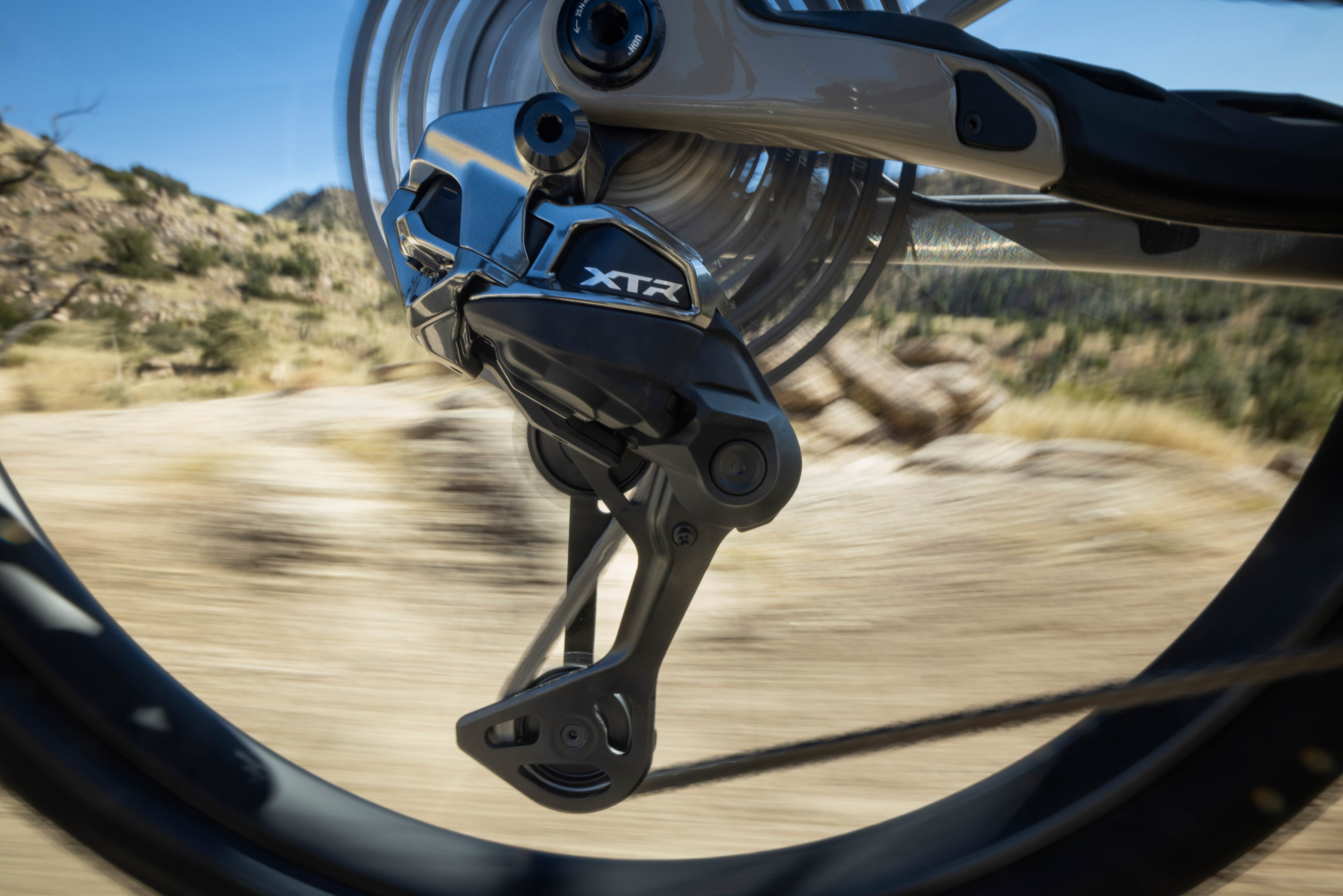
A nine-tooth sprocket
If you want to maintain a decent gear range, and don’t want to put a long cage derailleur on for fear of rock strikes, then instead of going bigger and bigger with the largest sprockets, as we’ve seen with SRAM’s Eagle options, Shimano has instead gone smaller, adding a 9t smallest sprocket to one of its cassette options, whilst maintaining the use of the microspline freehub body employed currently by Shimano MTB systems.
A 9t is the smallest we’ve seen in what we can reasonably call ‘performance cycling’, though it has been common in the world of BMX for some time in an effort to reduce the size of the chainrings while maintaining the same gear ratio. The 9-45t cassette sets a new standard for sprocket size in any case, but maintains a 500% gear range. It’s still less than the 520% on offer from an Eagle 10-52 cassette, but in a substantially smaller package.
These cassettes can be paired with either XC Race (read: lightweight) or Enduro (read: more durable) versions of the same crankset, both based on the tried and tested Hollowtech II blueprint.

Choose-your-own-adventure braking and a new shifter pod
Unlike most (neigh, all, if I’m not mistaken) groupset options, where the braking setup was set in stone, besides fitting larger or smaller rotors, XTR Di2 has three different braking options: A lightweight XC Race setup, a setup that’s a little heavier that prioritises braking power and modulation for trail/enduro riding, and a middle ground that tries to be the best of both.
How Shimano has achieved this, I think, is by offering a pair of brake callipers (trail & XC), one being four-piston and the other two, and a pair of brake lever options (also trail & XC), and, I presume, allowing users to opt to run a trail lever with an XC caliper or vice versa, though it is not clear what is the suggested combination at this time. Shimano has offered 4-pot and 2-pot callipers as part of the same system before, but they both used the same lever. Both systems use a new, lower viscosity (thinner) mineral oil that, Shimano says, helps to provide a consistent piston rebound speed over a wider temperature range.
Finally there is a new shifter, given that, like an XC Bob Dylan, it’s finally gone electric. The little control deck has three configurable buttons, two for shifting and one to act as a bonus button for things like your bike computer. These can be purchased in a band-on configuration, or in a guise that bolts directly onto the XTR brake levers themselves for a cleaner cockpit.
This is, as far as we are aware, the first time that bonus buttons have features on a mountain bike groupset, opening up possibilities for flat bar enthusiasts hitherto only available to drop bar riders. In reality, the ability to swap computer screens without taking your hands off the bars makes a lot more sense for MTB than it does for road riding.
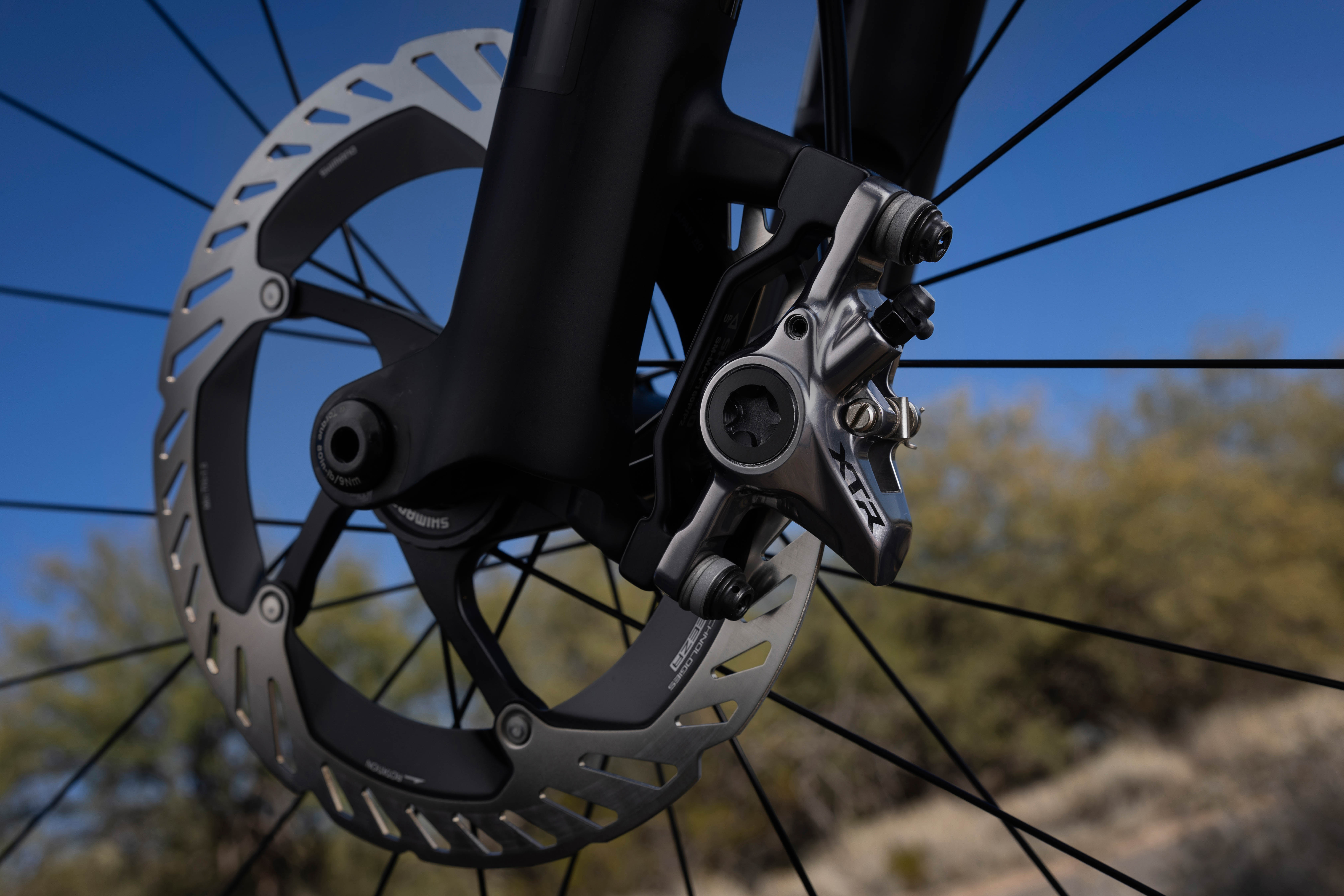
What does this mean for the future of Shimano?
It is perhaps slightly outside of our normal wheelhouse to cover the launch of an MTB groupset, but this XTR launch prompts some educated guesswork and speculation about what the future holds for Shimano componentry.
Personally I think the move to a wireless system is both welcome and overdue. I am a huge fan of Shimano groupsets, but the installation and maintenance headaches are significantly greater than that of SRAM options. I think, in the fullness of time, we will see wireless shifting on offer on gravel and road groupsets.
I don’t think we will see the end of 2x, though thanks to SRAM’s patents we will probably see any Shimano wireless 2x systems adopting a pair of non-identical batteries as is the case with Campagnolo Super Record Wireless.
What is more intriguing is where this places the future of inter-groupset compatibility. Now we have electronic, 12sp shifting in road, gravel, and MTB, this means that there may finally be a path opening up for true intercompatibility between road, gravel, and MTB setups in the same way as in the SRAM ecosystem.
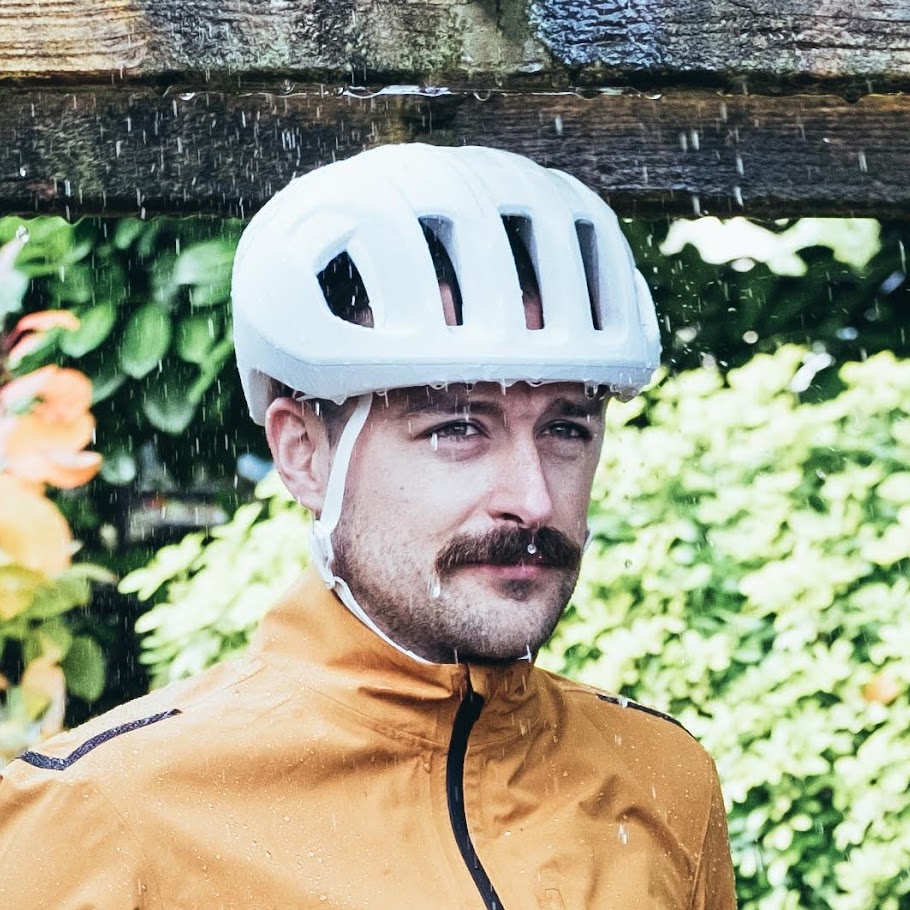
Will joined the Cyclingnews team as a reviews writer in 2022, having previously written for Cyclist, BikeRadar and Advntr. He’s tried his hand at most cycling disciplines, from the standard mix of road, gravel, and mountain bike, to the more unusual like bike polo and tracklocross. He’s made his own bike frames, covered tech news from the biggest races on the planet, and published countless premium galleries thanks to his excellent photographic eye. Also, given he doesn’t ever ride indoors he’s become a real expert on foul-weather riding gear. His collection of bikes is a real smorgasbord, with everything from vintage-style steel tourers through to superlight flat bar hill climb machines.
You must confirm your public display name before commenting
Please logout and then login again, you will then be prompted to enter your display name.
